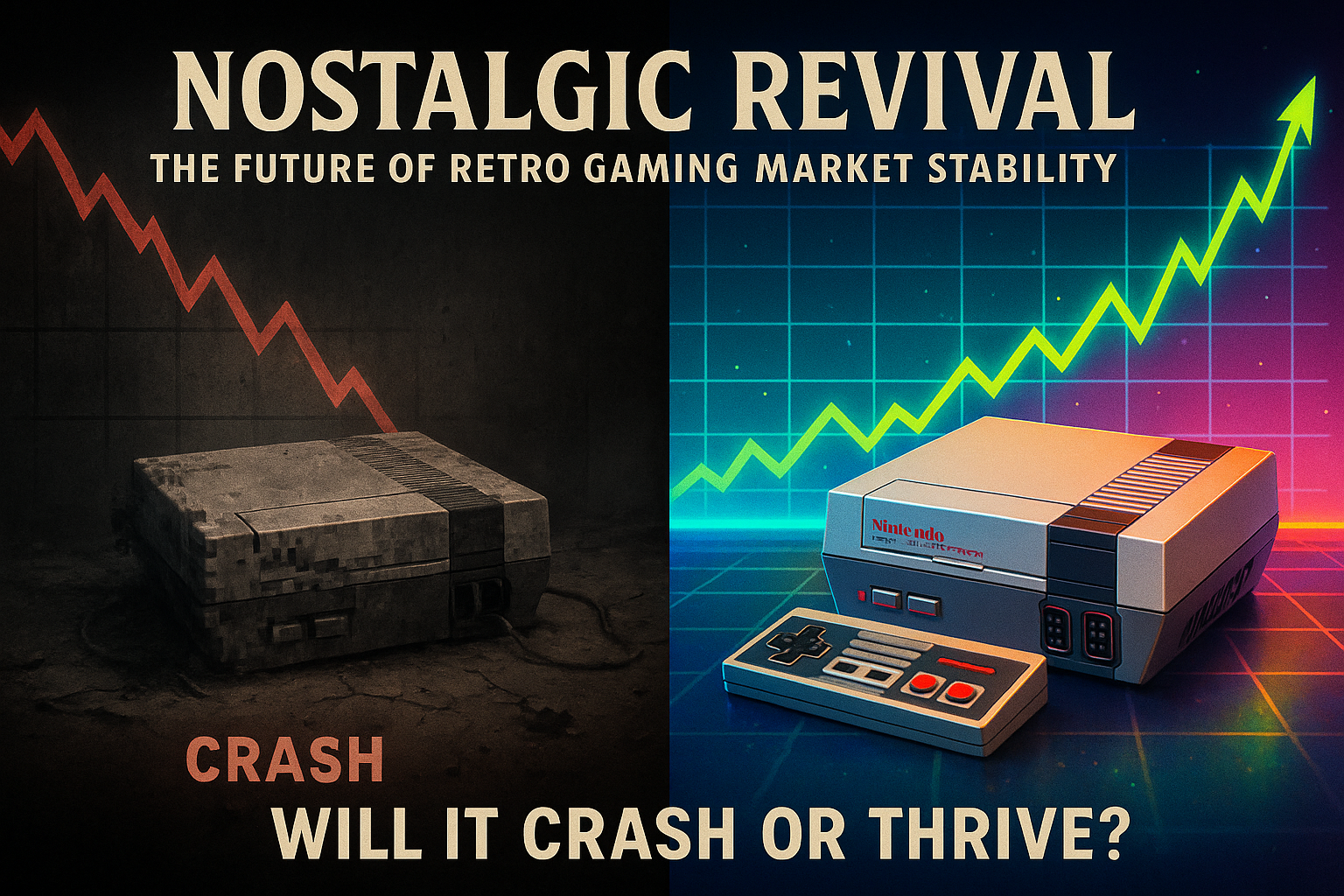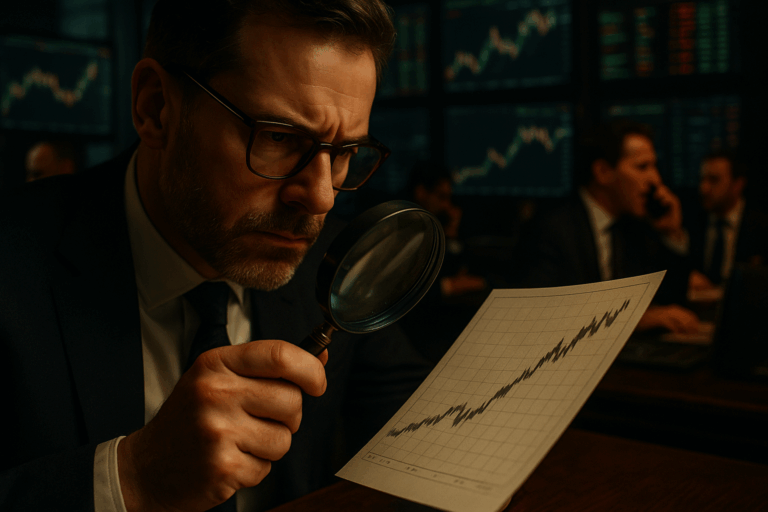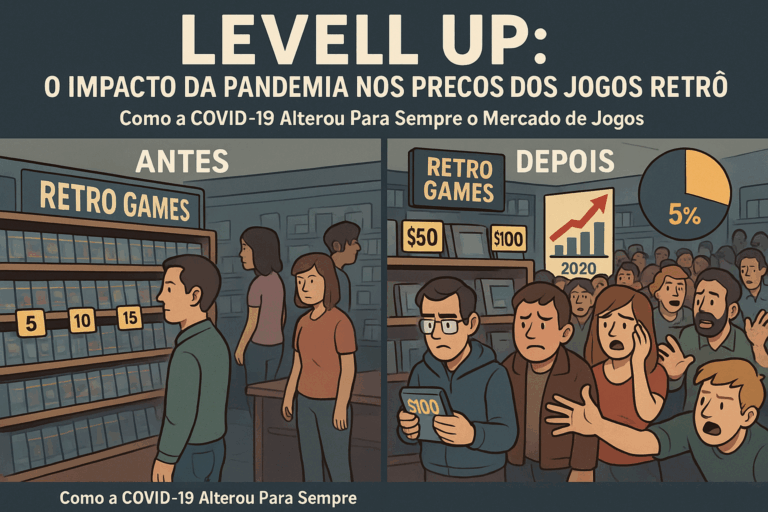In the vast and diverse universe of the gaming industry, one sector that has managed to remain resilient and fascinating over the years is retro gaming. It is a world that is as much about the games themselves as it is about the nostalgia they bring. This resurgence of interest in old-school video games, often known as the ‘Nostalgic Revival,’ is the topic we aim to delve into today. The curiosity that surrounds us begs the question, “Will the Retro Gaming Market continue to thrive, or is it heading towards a crash?”
We are standing at an intriguing crossroad, where our technologically advanced present intersects with a longing for the simplicity of the past. This intersection has breathed new life into the retro gaming industry, catalyzing its revival in ways no one could have predicted. However, as with any market experiencing an unexpected boom, the sustainability of this growth is questionable. Can the retro gaming market truly maintain its momentum, or will the bubble burst, leading to its eventual downfall?
To understand the future of the retro gaming market, it’s essential to delve into its past and present. We will examine the roots of the nostalgic revival, analyzing key factors that have contributed to the rejuvenation of this industry. From the resurgence of classic gaming consoles to the rising popularity of ‘retro-inspired’ new releases, we will dissect various elements that have sparked a renewed interest in retro gaming.
Next, we will transition into discussing the current state of the retro gaming market, scrutinizing its strengths, weaknesses, opportunities, and threats. We will look at the market’s stability from different angles – consumer demographics, market demand, pricing trends, the influence of modern gaming, and the role of technology in preserving and enhancing old gaming experiences. Each of these aspects will provide us with a comprehensive overview of the market’s present state and significant indicators for its future.
Finally, armed with insights from the past and present, we will venture into predicting the future of the retro gaming market. Will it continue to bask in the glory of its nostalgic charm, or will it succumb to the advancements of modern gaming? As we navigate through this thought-provoking journey, we hope to not only satisfy your curiosity but also equip you with a nuanced understanding of the retro gaming market, its potential, its challenges, and its undying allure. So, let’s hit the ‘start’ button and jump right into the game!
Understanding the Retro Gaming Market
The retro gaming market has seen significant growth in recent years, rekindling interest in classic games that defined generations of gamers. The nostalgia of reliving the past and the desire to experience games that laid the foundations of modern gaming have led to an increasing demand for retro games.
But how stable is this market? And what is the future of the retro gaming industry? Will it crash or continue to thrive? Let’s delve deeper into these questions.
The Appeal of Retro Games
Retro games have a unique charm that modern games often lack. They take us back to a simpler time when gameplay was the main focus, and graphics were secondary. For many, playing these games is akin to revisiting a cherished part of their childhood, invoking feelings of nostalgia.
A study conducted by the University of Southampton found that nostalgia can have positive effects on self-esteem and overall mood, suggesting that the emotional connection to these games is a key driver of the retro gaming market.
The Economic Viability of Retro Games
There is a clear demand for retro games, and where there’s demand, there’s money to be made. Retro game sales have been on the rise, and the industry is projected to reach $2.5 billion by 2027, according to a report by Grand View Research.
However, the retro gaming market is not without its challenges. The scarcity of physical copies of old games, the cost and difficulty of maintaining vintage hardware, and the legal issues surrounding game emulation are all factors that could potentially destabilize the market.
Comparing Modern and Retro Gaming
| Aspect | Retro Gaming | Modern Gaming |
|---|---|---|
| Graphics | Simple, pixelated | Highly detailed, realistic |
| Gameplay | Basic mechanics, focus on skill | Complex mechanics, emphasis on story |
| Hardware | Obsolete, difficult to maintain | Advanced, regularly updated |
| Availability | Limited, expensive | Widespread, varying prices |
Modern vs. Retro: Graphics
While modern games often boast high-quality graphics and immersive environments, retro games offer a more simplistic, pixelated style. This is not necessarily a drawback; many players appreciate the distinctive aesthetic of retro games, and it can even add to the charm and appeal.
Modern vs. Retro: Gameplay
Retro games typically focus on core gameplay mechanics and skill, with less emphasis on narrative. This contrasts with many modern games, which often weave intricate stories and complex characters into the gameplay. Some players prefer the straightforward, skill-based challenge of retro games, while others enjoy the rich narratives of modern games.
Modern vs. Retro: Hardware
When it comes to hardware, there’s a clear divide between modern and retro gaming. Modern gaming hardware is powerful and regularly updated, while retro gaming hardware is obsolete and can be difficult to maintain. This creates a challenge for the retro gaming market, as the original consoles required to play these games become increasingly rare and expensive.
The Future of the Retro Gaming Market
Looking ahead, the retro gaming market faces both opportunities and challenges. On the one hand, the continued interest in retro games and the rise of digital platforms offering classic games indicate a promising future.
The Role of Digital Platforms
Digital platforms are making it easier than ever to access and play retro games. Nintendo’s Virtual Console, PlayStation’s PS2 Classics, and online services like GOG.com all offer a wide selection of classic games. These platforms not only make retro games more accessible but also help to preserve them for future generations.
Is there a Bubble?
Despite the positive signs, some fear that the retro gaming market may be a bubble that could burst. Prices for retro games and consoles have skyrocketed in recent years, and some question whether this is sustainable.
To get a detailed understanding of this potential bubble, I highly recommend watching the video “Is Retro Gaming a Bubble?” by The Game Economist on YouTube. It provides an in-depth analysis of the retro gaming market and its potential future.
Thriving or Crashing: A Balanced View
Whether the retro gaming market will crash or continue to thrive is hard to predict. On the one hand, the increasing scarcity and price of vintage hardware, as well as the legal issues surrounding game emulation, present significant challenges. On the other hand, the continued interest in retro games and the rise of digital platforms suggest a promising future.
Regardless of what the future holds, one thing is clear: retro games have left an indelible mark on the world of gaming, and their influence will continue to be felt for generations to come. And for those who love these games, the opportunity to revisit the classics and share them with new generations of gamers is priceless.

Conclusion
In conclusion, the retro gaming market’s future is a topic of intriguing speculation, with evidence to suggest both a promising outlook and potential challenges. The appeal of retro games, deeply rooted in nostalgia and the simplicity of a bygone era, has fueled its rise in popularity. The emotional connection to these classic games, as confirmed by a study from the University of Southampton, serves as a potent force driving the market.
Despite the undeniable demand, the sustainability of the retro gaming market presents certain challenges. These include the scarcity and expense of vintage hardware, the steep costs associated with maintaining such hardware, and the legal complications around game emulation. These factors have the potential to unsettle the market and even spark concerns over a possible bubble scenario, as articulated in the recommended video by The Game Economist on YouTube.
Simultaneously, we must not overlook the distinct contrasts between the modern and retro gaming sectors, each with their unique attributes. While modern games typically feature high-definition graphics and complex narratives, retro games often charm with their simpler, pixelated aesthetics and basic gameplay mechanics. The availability and advancement of hardware present a clear disparity between the two sectors, further complicating the picture.
Yet, with every challenge comes opportunity, and the retro gaming market is no exception. The rise of digital platforms offering a wide selection of retro games has made them more accessible than ever. Giants like Nintendo’s Virtual Console, PlayStation’s PS2 Classics, and online services like GOG.com are not just expanding reach but also preserving these classics for future generations, which could be a significant boon for the industry.
While the ultimate fate of the retro gaming market remains uncertain, what is clear is its indelible impact on the world of gaming. The legacy of retro games, their influence on modern gaming, and the priceless joy they bring to their admirers, ensure they will continue to hold a cherished place in the gaming world, regardless of market trends.
In closing, we encourage you to delve deeper into this fascinating subject, share your thoughts and experiences, and continue to enjoy the timeless appeal of retro gaming. Whether you’re a retro gaming enthusiast, an investor in the market, or simply a casual gamer, your insights and experiences are valuable. Feel free to share your thoughts and experiences in the comments below, and don’t hesitate to share this article with anyone who might find it interesting.
For additional information and a more in-depth exploration of the topic, we recommend checking out the referenced resources, such as the report by Grand View Research on the projected growth of the industry and the study by the University of Southampton on the impact of nostalgia.
As we delve deeper into the future of gaming, it is essential to remember and appreciate the roots from which it grew, embodied by the timeless classics of retro gaming. Whether the market thrives or faces difficulties, retro games will undoubtedly continue to provide joy, nostalgia, and a bridge to the past that shapes the future of gaming.



